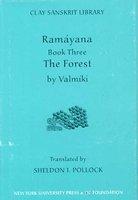
Book Summary
"The books line up on my shelf like bright Bodhisattvas ready to take tough questions or keep quiet company. They stake out a vast territory, with works from two millennia in multiple genres: aphorism, lyric, epic, theater, and romance." --Willis G. Regier, "The Chronicle Review" "No effort has been spared to make these little volumes as attractive as possible to readers: the paper is of high quality, the typesetting immaculate. The founders of the series are John and Jennifer Clay, and Sanskritists can only thank them for an initiative intended to make the classics of an ancient Indian language accessible to a modern international audience." --"The Times Higher Education Supplement" "The Clay Sanskrit Library represents one of the most admirable publishing projects now afoot. . . . Anyone who loves the look and feel and heft of books will delight in these elegant little volumes." --"New Criterion" "Published in the geek-chic format." --"BookForum" "Very few collections of Sanskrit deep enough for research are housed anywhere in North America. Now, twenty-five hundred years after the death of Shakyamuni Buddha, the ambitious Clay Sanskrit Library may remedy this state of affairs." --"Tricycle" aNow an ambitious new publishing project, the Clay Sanskrit Library brings together leading Sanskrit translators and scholars of Indology from around the world to celebrate in translating the beauty and range of classical Sanskrit literature. . . . Published as smart green hardbacks that are small enough to fit into a jeans pocket, the volumes are meant to satisfy both the scholar and the lay reader. Each volume has a transliteration of the original Sanskrit texton the left-hand page and an English translation on the right, as also a helpful introduction and notes. Alongside definitive translations of the great Indian epics -- 30 or so volumes will be devoted to the Maha-bharat itself -- Clay Sanskrit Library makes available to the English-speaking reader many other delights: The earthy verse of Bhartri-hari, the pungent satire of Jayanta Bhatta and the roving narratives of Dandin, among others. All these writers belong properly not just to Indian literature, but to world literature.a --"LiveMint" aThe Clay Sanskrit Library has recently set out to change the scene by making available well-translated dual-language (English and Sanskrit) editions of popular Sanskritic texts for the public.a --"Namarupa" aBy any measure the Ramayana of Valmiki is one of the great epic poems of world literature. . . . Now the New York University Press is republishing the translations, without notes and with minimal introductions, in more accessible and less expensive editions, as part of the Clay Sanskrit Library. So far the translators have been eminently successful.a --"The New York Sun" Refers to the nine volumes of the Ramayana] The skies darken for the exiles, who have taken refuge in forest hermitages. First one demon, then another, attempts to harm or corrupt them. When these efforts fail, an army of demons is sent, and then a bigger one, but each time Rama again defeats them. Finally Ravana, the supreme lord of the demons, decides to cripple Rama by capturing Sita; he traps her, and carries her off under heavy guard to the island fortress of Lanka. Rama is distraught by grief, and searches everywhere without success. Co-published by NewYork University Press and the JJC Foundation For more on this title and other titles in the Clay Sanskrit series, please visit http: //www.claysanskritlibrary.org
Book Details
| Book Name | Ramayana Book Three: The Forest |
| Author | Valmiki, Sheldon Pollock |
| Publisher | New York University Press (Jun 2006) |
| ISBN | 9780814767221 |
| Pages | 436 |
| Language | English |
| Price | 946 |








